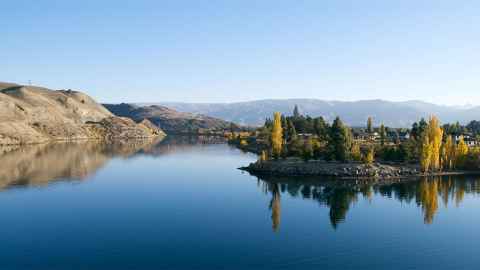Follow Australia on water rules
12 December 2019
Opinion: NZ should look to Australia’s nationwide system of water accounting rather than leave it to the regions, writes Jayne Godfrey and Jagdeep Singh-Ladhar.

When confronted by the life-threatening water shortage caused by the Millennium Drought from 2001 to 2009, Australia developed a national system of water accountability as part of widespread reforms, a world first.
New Zealand faces its own water quality crisis and problems with over-allocation, threatening our lifestyle and economy. What can we learn from our neighbours?
While Australia has invested in developing and then putting in place water accounting standards as part of comprehensive reforms under the National Water Initiative 2004 and Water Act 2007, New Zealand has taken a different approach.
New Zealand guidance on water accounting targets regional councils and their role to collate data on water takes. The Ministry for the Environment published A Guide to Freshwater Accounting under the National Policy Statement for Freshwater Management 2014, but the guidance is not prescriptive. Rather than aim for a standardised approach the guidance gives councils the “flexibility to establish a freshwater accounting system that suits their unique needs.” Such flexibility may assist councils’ internal decisions regarding how much water is allocated or how water quality is to be recorded and reported. However, the same cannot be said for establishing externally credible robust methods that measure, report and verify water quantity or quality.
The guidance on freshwater accounting provides nine high-level principles for developing water accounting standards. It draws on domestic research and the “general features outlined in the Australian standard for water accounting.” While asserting there should be “transparency” so that “all methods used for accounting should be clearly documented, so that calculations are repeatable”, it does not appear to recognise that if councils develop their own water accounting systems there will be less transparency and comparability.
For example, if different water accounting standards define a water asset differently across regions (e.g. by including/excluding groundwater or water that is polluted), how would a farmer compare the information? Or a financial institution or investor wanting to invest in the farm, company, or area? How can water policy researchers work across regions to make comparisons about different methods of conserving water or returning water to the environment? The answers to such questions do not appear to be readily available in the guidance for regional councils.
From low rainfall regions on the Otago plains to rain-drenched Auckland, farmers, policy makers, tourism, townships and other industries and communities have much at stake in terms of local volumes and/or quality of water. Moreover, many will want to compare these attributes across regions, industries, businesses, farms or other locations; or over time for the same entity. To make meaningful comparisons, stakeholders will want to compare relevant information that is prepared and presented according to the same standardised principles, much like standardised financial information is presented in accounts.
Given that Australia has already gone through a rigorous process to develop standards for the preparation and assurance of water accounting reports, New Zealand could transform the piecemeal status quo by adopting those standards.
In Australia the process of developing water accounting standards began with a careful analysis of user needs and policy considerations. In 2009, the Water Accounting Conceptual Framework for the Preparation and Presentation of General Purpose Water Accounting Reports was developed in consultation with accounting academics and professionals, and engineers.
They drew upon experience in creating financial reporting standards for a range of stakeholders. To name a few, these included: councils sourcing, allocating or diverting water; water-intensive producers in agriculture, aquaculture and mining measuring their use of water (including tracing the effects of production on water quality throughout the production process); financial institutions that use water or water permits as collateral in lending agreements; and water policy researchers.
The development of water accounting as a discipline has been tied to broader Commonwealth water reforms that emphasise the ability to measure, check and audit that water takes are accurately represented by Commonwealth entities. It is a core part of the reforms that is sometimes overlooked.
The resulting Australian Water Accounting Standards reflect the systematic approach and the need to account for water in a country where it is a scarce and valuable resource. Applying these standards would save New Zealand’s regional councils valuable time, effort and dollars. It would also enhance the comparability and credibility of reporting on a resource that is just as valuable and precious for all aspects of life in New Zealand.
Professor Jayne M Godfrey is Dean of the Business School and former member of the Australian National Water Accounting Standards Board; Jagdeep Singh-Ladhar is a lecturer in commercial law at the Business School.
This article reflects the opinion of the author and not necessarily the views of the University of Auckland.
Used with permission from Follow Australia on water rules 12 December 2019.
Media queries
Alison Sims | Research Communications Editor
DDI 09 923 4953
Mob 021 249 0089
Email alison.sims@auckland.ac.nz